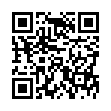Set Time Zone Automatically in Snow Leopard
Frequent travelers may be interested to know that in Snow Leopard your time zone can now be set automatically by bringing up the Date & Time preference pane, clicking the Time Zone view, and selecting Set Time Zone Automatically. A progress spinner appears while Snow Leopard sends off information about the Wi-Fi signals in your vicinity and receives location data back.
Submitted by
Doug McLean
Recent TidBITS Talk Discussions
- Alternatives to MobileMe for syncing calendars between iPad/Mac (1 message)
- Free anti-virus for the Mac (20 messages)
- iTunes 10 syncing iPod Touch 4.1 (2 messages)
- Thoughts about Ping (16 messages)
More Details on Ultrawideband (UWB) Speed
In last week's issue, I explained the upcoming UWB wireless technology, but I may have overstated its range. (See "Ultrawideband to Add New Wireless Options" in TidBITS-819.)
<http://db.tidbits.com/article/08448>
In a coincidentally timed article at ZDNet, the head of the USB Implementers Forum states that UWB products will be available in the third quarter of 2006 that conform to Wireless USB standards for conveying USB 2.0 via UWB. But he also says that UWB can hit 480 Mbps, its current high speed in the Intel-backed version, within 10 feet (3 m), not 100 (30 m) feet as I reported. He said the speed drops to 110 Mbps between 10 and 30 feet (9.1 m). (Also, the industry head quoted in this article states a specific amount of power consumption for UWB: half of Wi-Fi.)
<http://news.zdnet.com/2100-9584_22-6046560.html>
I've been following UWB for years, and historically speaking, companies had agreed to produce chips that could hit 480 Mbps at 10 feet and 110 Mbps at 30 feet. But more recently, some companies have been claiming they would be able to produce higher throughputs over longer distances; hence my report last week of 480 Mbps at up to 100 feet. Those longer distances may be overly optimistic.
I expect that, as usual, the truth lies in between. 10 feet is a reasonable distance for most peripherals. Most people wouldn't put a peripheral more than 10 feet from their computer today, but Wireless USB and UWB in general will eventually allow a computer to be across the room from your monitor, keyboard, and other peripherals.
Thirty feet means you won't have to get up and cross the room to spool video to your TV or synchronize a phone. It would also let you use a handheld device to watch video streamed from a central storage device.
I'll be curious to see what distances are promised when Wireless USB ships. I queried Alereon about UWB range: they're a member of the WiMedia Alliance and will be one of the first companies shipping UWB silicon for manufacturers. They confirmed that the 10 feet for 480 Mbps and 30 feet for 110 Mbps are part of the target for their flavor of UWB, as it was for the IEEE standard.
Alereon's modeling shows that their equipment could reach 67 feet (20.5 m) at 110 Mbps and 27 feet (8.2 m) at 480 Mbps - in a perfect world. The FCC and regulatory limits on signal strength restrict the maximum range in the real world.
Alereon said that Freescale has ideas for a longer-distance 110 Mbps signal that requires a "new interpretation" of the FCC testing guidelines that confirm a UWB device is within the regulated parameter. Of course, the entire WiMedia radio approach also required a new interpretation, one that the FCC didn't disagree with ultimately.
in Los Angeles. The 3-day event is packed with sessions & evening
activities. Learn from the best. Meet and spend time with peers.
TidBITS readers save $50 at <http://macte.ch/conf_tidbits>!

